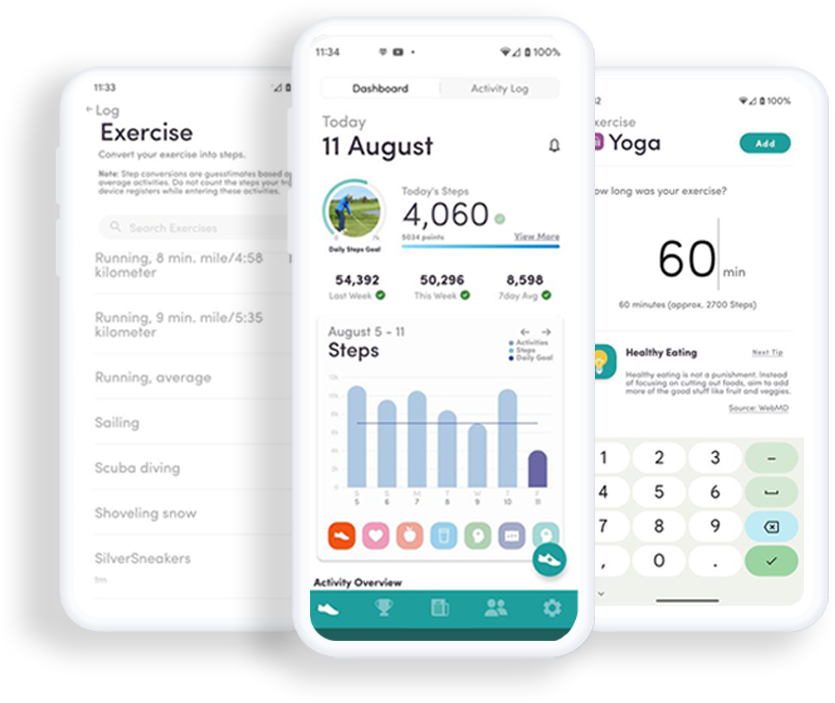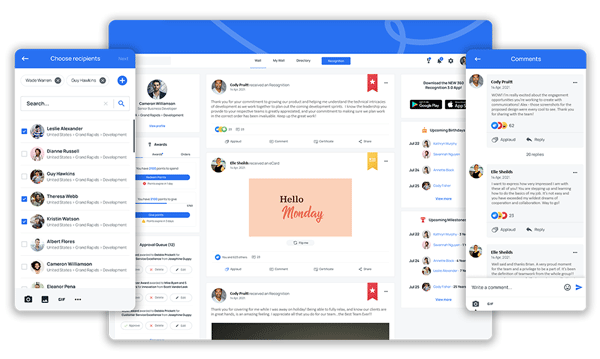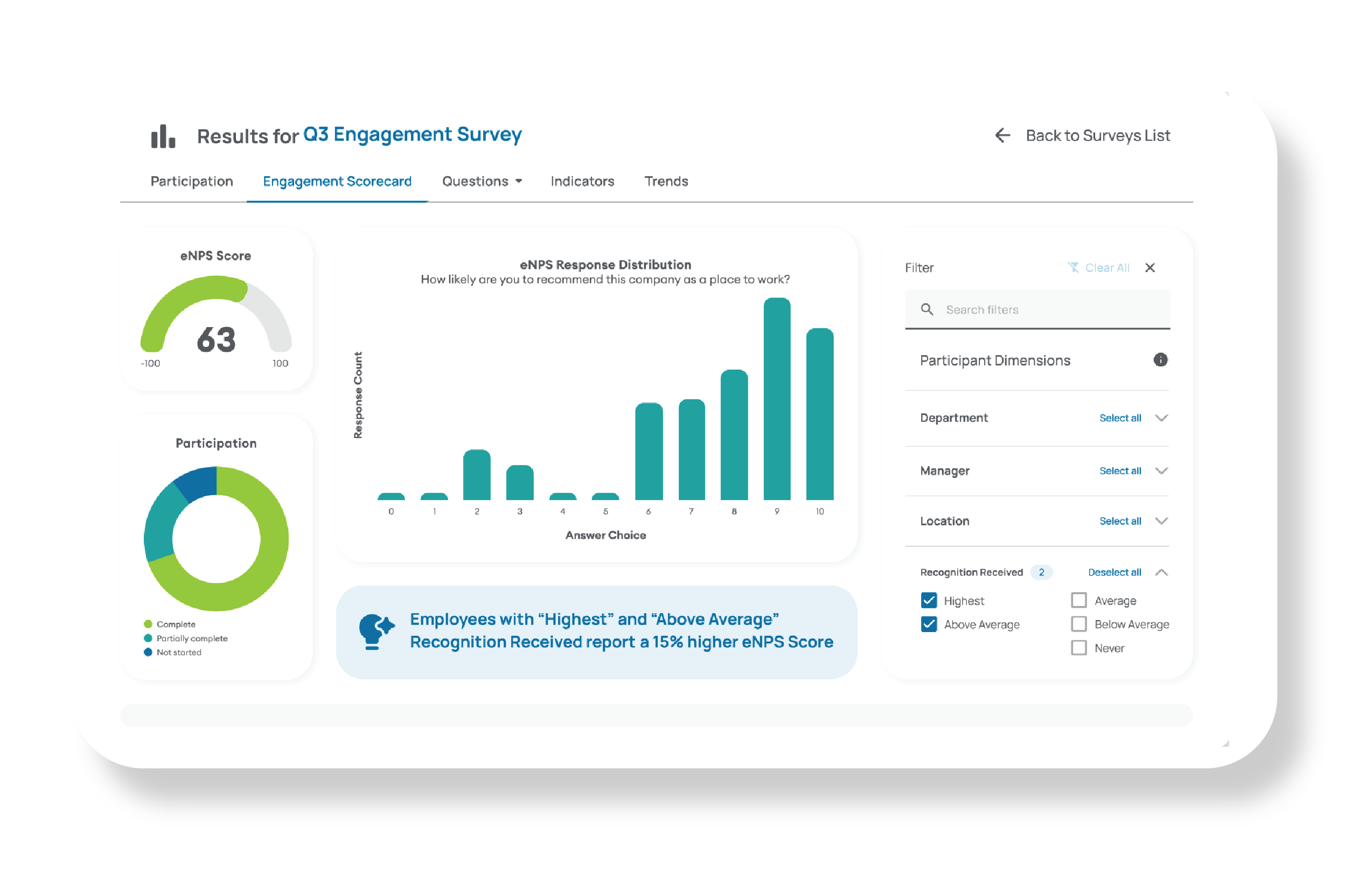April 4, 2025


Looking for ways to improve employee wellbeing? You're not alone. Mental Health America's 2024 "Mind the Workplace" report shows that 74% of employees feel emotionally drained by work. Additionally, Gen Z and Millennials are particularly struggling, with 71% and 59% respectively reporting unhealthy workplace mental health scores.
This guide dives into why it matters and provides actionable strategies on how to improve employee wellbeing, boosting morale, health, and productivity in your organization.
Key Takeaways
- Employee wellbeing is crucial for productivity and retention, impacting mental, physical, emotional, and financial health.
- Implementing wellness programs and promoting open communication can significantly enhance employee engagement and morale.
- Monitoring employee wellbeing through pulse surveys and setting measurable wellbeing goals are essential for continuous improvement.
Why Employee Wellbeing Matters
Employee wellbeing promotes respect and increases satisfaction levels, leading to higher productivity and customer satisfaction. Focusing on employee wellbeing can improve productivity, reduce turnover, fuel innovation, nurture customer retention, and drive revenue. When employee wellbeing is low, retention and recruitment suffer, leading to financial losses for the organization.
The most common cause of long-term unplanned absences is mental health issues. Financial stress can lead to decreased productivity and impact physical and mental health at work. Ignoring the human factor in business leads to wrong business calculations.
10 Signs of Poor Employee Wellbeing
Recognizing signs of poor employee wellbeing is crucial for timely intervention and support. Employees spend over half their waking hours at work, which significantly influences their overall health. A focus on employee wellbeing can enhance business performance and reduce the risk of disease and injury among workers.
- Frequent Absences: Increased use of sick days or unplanned time off.
- Fatigue and Low Energy: Employees may appear tired or disengaged.
- Health Complaints: Reports of stress-related ailments like headaches, back pain, or frequent illnesses.
- Increased Irritability: Employees may become easily frustrated or exhibit mood swings.
- Lack of Enthusiasm: Noticeable disinterest in tasks or projects that once motivated them.
- Decreased Productivity: Difficulty meeting deadlines or maintaining quality standards.
- Lack of Focus: Trouble concentrating, making errors, or forgetting tasks.
- Higher Turnover: An increase in resignations, especially among previously engaged employees.
- Conflict Among Teams: More frequent disputes or tension among colleagues.
- Low Morale: A pervasive sense of dissatisfaction or negativity within the team.
Recognizing these signs early is critical for addressing the underlying issues.
15 Ways to Enhance Employee Wellbeing
Implementing effective strategies to enhance employee wellbeing can lead to a more productive and engaged workforce. Healthy employees are more productive, have a better quality of life, and contribute more to their communities.
Here are 15 ways you can start improving employee wellbeing at your company.
1. Implement a Wellness Program
Wellness programs are designed to support employee well-being. Leadership teams can create effective wellness programs by researching trends and surveying employees. Offering regular wellness challenges is a simple method organizations can use to improve employee wellbeing. Incentivizing participation in wellness initiatives with rewards for completing or winning challenges can promote engagement.
Analyzing employee health data allows companies to pinpoint specific health trends within their workforce, leading to more targeted wellness initiatives.
2. Promote Open Communication
Establishing a culture of open communication helps in reducing anxiety and encourages employees to share concerns about their wellbeing. Open communication empowers employees and positively impacts their mental and emotional wellbeing. Regular feedback sessions can help in identifying employee stressors and provide an opportunity for managers to address them.
However, it's important for employers to consider the feedback received from employees and be transparent about possibilities for improvement. Regular performance reviews provide feedback, identify improvement areas, and encourage communication. Following up on the support provided during performance reviews is a key action for managers to show commitment to team wellbeing.
3. Offer Flexible Work Arrangements
Examples of flexible working arrangements are flexible start and finish times, remote work options, and flexible hours. Flexible working hours can significantly enhance employees’ sense of control over their work-life balance.
Employees with flexible work options tend to report higher levels of job satisfaction and reduced stress. Offering flexible work arrangements can improve employee wellbeing, leading to a more engaged and productive workforce.
4. Build an Inclusive Culture
Building an inclusive work culture is about creating an environment where everyone feels respected, valued, and empowered to contribute, regardless of their background, identity, or role.
Organizations should regularly audit and update policies to support inclusion, such as implementing fair hiring practices, establishing comprehensive anti-discrimination policies, and offering flexible work arrangements that accommodate different needs. Open communication is key—employees should feel psychologically safe to speak up, provide feedback, and engage in conversations using inclusive language.
Ongoing education also plays a vital role; companies should offer training on unconscious bias, cultural competency, and allyship to empower employees to be more aware and supportive. Celebrating diversity through the recognition of cultural events, supporting Employee Resource Groups (ERGs), and hosting inclusive social activities reinforces a sense of belonging. It’s also essential to provide equitable growth opportunities by offering mentorship programs, ensuring transparency in promotions, and conducting regular pay equity reviews.
5. Encourage Personal Growth
Ongoing training and development enhances both work and personal life, making it a vital aspect of employee wellbeing. Career development opportunities directly contribute to higher employee job satisfaction. Establishing mentorship programs allows employees to connect with experienced colleagues for guidance and support.
Offering mentorship programs is key for encouraging employees’ personal development.
6. Provide Recognition and Rewards
Employee recognition boosts overall morale and leads to increased motivation and job satisfaction. A recognition culture fosters a sense of belonging and community, enhancing employee engagement.
Including remote employees in recognition initiatives is essential to make them feel part of the workplace community. Celebrating milestones such as birthdays and work anniversaries is an effective recognition strategy that can significantly improve morale.
7. Health Initiatives
Employee wellbeing encompasses both mental and physical health, which are essential for optimal workplace performance. Physical health is a critical aspect of employee well-being.
Companies can enhance employee wellness by implementing initiatives like on-site gyms and fitness classes. Health insurance plans that include coverage for dental and vision care, as well as regular mental health appointments, enhance employee wellness. Such comprehensive coverage is essential for overall health.
8. Mental Health Resources
Providing mental health resources in the workplace is essential for support employee wellbeing. Luckily, many workplaces are now providing access to mental health resources such as therapy sessions and mindfulness classes to support their employees. Therapy sessions and mindfulness classes help employees cope with stress and enhance their overall mental health.
Additionally, companies should encourage employees to prioritize work-life balance by providing flexible scheduling, remote work options, and generous paid time off policies to help reduce burnout and support overall well-being.
9. Encourage Self-Care
In addition to companies creating a healthy work culture, employers can also play a role in preventing burnout by promoting self-care practices among their staff. Self-care practices are essential for preventing burnout and maintaining overall wellbeing. By implementing strategies that encourage self-care, employers can enhance employee morale and job satisfaction.
Initiatives such as wellness programs, flexible work arrangements, and open communication can empower employees to prioritize self-care.
10. Offer Financial Planning Benefits
Financial planning services are essential in helping employees manage their finances effectively, leading to reduced stress and enhanced wellbeing. Types of financial planning benefits for employees include classes, financial software, and one-on-one coaching.
Debt repayment programs support employee financial health by reducing stress associated with managing debts. By providing debt assistance, employees can understand and manage their debts more efficiently, which alleviates financial burdens.
Financial wellness programs can be tailored to meet diverse employee needs, from basic budgeting to retirement planning.
11. Facilitate Team Bonding Activities
Team bonding activities are essential for strengthening the relationships among team members. Activities such as team building events, informal meetings, and lunches or evenings out can boost team relationships. Good team relationships enhance workplace morale by allowing everyone to share ideas and opinions.
Participating in volunteer days enhances fulfillment, sense of community, and pride in work among employees.
12. Hosting Social Events
When planning social events, it is essential to include remote employees to ensure everyone feels part of the team. Hosting social events fosters a sense of community, which is crucial for employee wellbeing.
Social events enhance employee connections, contributing to a positive work culture and belonging.
13. Conduct Pulse Surveys
Pulse surveys serve as a tool to gather quick insights into employee sentiment. They are effective in measuring employee sentiment.
To encourage honest feedback, survey results should be kept anonymous.
14. Analyze Wellbeing Data
Monitoring and measuring employee wellbeing is crucial for understanding the overall health of the workforce and making informed HR decisions. Conducting anonymous pulse surveys allows HR leaders to gauge employee sentiment and identify specific wellbeing areas needing attention.
Setting specific and measurable wellbeing goals helps organizations track progress and assess the effectiveness of their initiatives.
15. Set Wellbeing Goals
Establishing specific and measurable wellbeing goals enables organizations to track progress and assess success effectively. Effective wellbeing goals should be specific, measurable, and relevant to both the organization and its employees.
Tracking health metrics over time helps organizations measure the effectiveness of wellness programs and adjust strategies as necessary.
Summary
Investing in employee wellbeing is not only beneficial for employees but also for the organization. It leads to higher productivity, reduced turnover, and a positive company culture. By monitoring and measuring wellbeing, companies can continuously improve their strategies and ensure they meet the needs of their workforce. Prioritizing employee wellbeing is a strategic decision that drives long-term success and fosters a supportive and engaging work environment.





